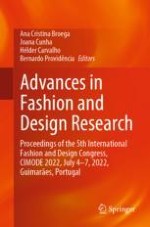This book offers a multidisciplinary perspective on research and developments at the interface between industrial design, textile engineering and fashion. It covers advances in fashion and product design, and in textile production alike, reporting on smart and sustainable industrial procedures and 3D printing, issues in marketing and communication, and topics concerning social responsibility, sustainability, emotions, creativity and education. It highlights research that is expected to foster the development of design and fashion on a global and interdisciplinary scale. Gathering the proceedings of the 5th International Fashion and Design Congress, CIMODE 2022, held on July 4-7, 2022, in Guimarães, Portugal, this book offers extensive information and a source of inspiration to both researchers and professionals in the field of fashion, design, engineering, communication as well as education.
